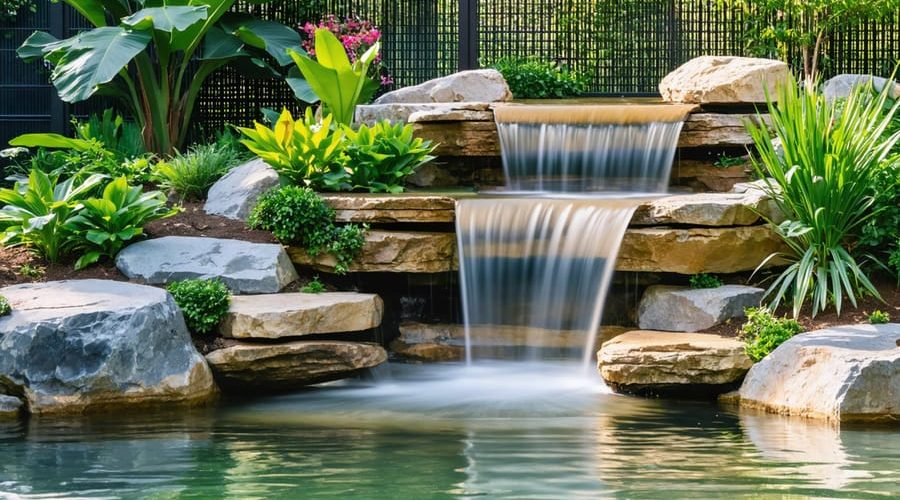As climate change and environmental concerns become increasingly urgent, homeowners are turning toward eco-friendly landscape remodeling to create beautiful outdoor spaces that also conserve natural resources. Sustainable landscaping not only reduces water and energy usage but also supports local ecosystems, lowers utility bills, and adds long-term value to your home.
Whether you’re planning a complete backyard renovation or just making small updates, these smart and sustainable ideas can complement your home remodeling efforts while helping protect the planet.
1. Choose Native and Drought-Tolerant Plants
One of the most effective ways to conserve water in your landscape is to select native or drought-tolerant plants. These species are well-adapted to your local climate and soil, requiring far less water, fertilizer, and maintenance than non-native alternatives. Succulents, ornamental grasses, and Mediterranean herbs like lavender or rosemary are beautiful, low-water options.
2. Install Drip Irrigation Systems
Traditional sprinklers often waste water through evaporation or runoff. Drip irrigation systems, on the other hand, deliver water directly to the roots of plants, where it’s needed most. This method minimizes waste and provides more consistent moisture, which promotes healthier plant growth and reduces your water bills.
3. Use Permeable Surfaces
When remodeling your landscape, consider replacing impermeable materials like concrete with permeable pavers, gravel, or decomposed granite. These surfaces allow rainwater to filter through the ground, helping recharge groundwater supplies and reducing runoff that can lead to erosion and pollution.
4. Collect and Reuse Rainwater
Rainwater harvesting systems are a sustainable addition to any eco-friendly landscape remodeling project. By installing rain barrels or cisterns, you can collect water during storms and reuse it for irrigation, saving thousands of gallons each year. It’s a simple yet impactful way to reduce your dependence on municipal water sources.
5. Add Mulch to Reduce Evaporation
Applying a layer of organic mulch around your plants helps retain soil moisture, reduce evaporation, and suppress weed growth. Mulch also enriches the soil as it decomposes, supporting long-term plant health and reducing the need for chemical fertilizers.
6. Incorporate Shade and Windbreaks
Strategically placed trees, shrubs, or pergolas can provide shade and natural windbreaks, reducing the temperature in your outdoor areas and even lowering your home’s cooling costs. Trees not only provide energy-saving benefits but also improve air quality and offer habitat for birds and pollinators.
7. Opt for Solar Lighting
Replace conventional outdoor lighting with solar-powered options to cut energy use and lower your carbon footprint. Modern solar lights are affordable, easy to install, and come in stylish designs to highlight pathways, plants, and architectural features.
8. Reduce Lawn Size
Large lawns require significant amounts of water, fuel, and chemicals to maintain. Consider reducing your lawn size by expanding planting beds, creating gravel paths, or installing native ground covers. A smaller lawn means lower maintenance and less environmental impact.
9. Reuse and Recycle Materials
Eco-friendly landscape remodeling also includes repurposing old materials like bricks, wood, or stone. Instead of buying new, consider using reclaimed materials for retaining walls, patios, or decorative elements. This reduces waste and adds unique, character-rich features to your yard.
10. Plan for Long-Term Sustainability
Design your landscape with the future in mind. Group plants with similar water and sunlight needs, consider the growth habits of trees and shrubs, and avoid overplanting. A well-thought-out plan will reduce the need for constant changes and help your landscape thrive for years.
Final Thoughts
Eco-friendly landscape remodeling proves that sustainability and beauty can go hand in hand. By making smart choices—from plant selection to water-saving technology—you can create a stunning outdoor space that conserves water, reduces energy use, and supports a healthier planet.
Whether you’re looking to lower your utility bills, reduce your environmental impact, or simply enjoy a low-maintenance yard, sustainable landscaping offers a win-win solution.





























